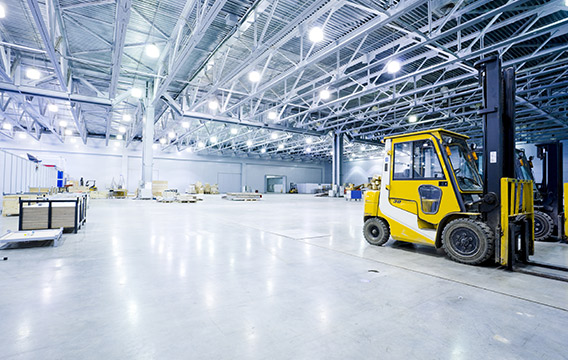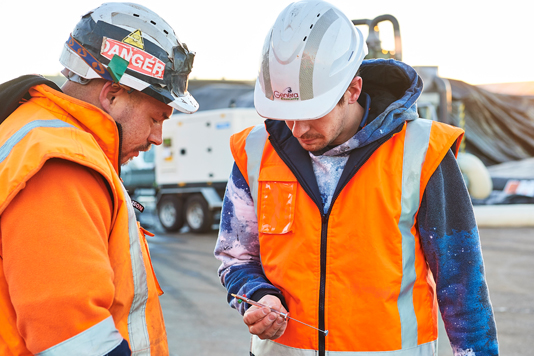A wide range of expert biosecurity services with diverse sectors

Logs & timber
Genera supplies treatments for fumigating export and import lumber to meet biosecurity requirements. We also pioneered in-transit fumigation treatments for export logs travelling from New Zealand to China.

Produce
Genera offers fruit fumigation services, to ensure they meet import and export requirements. Advances in treatment options allows Genera to provide safer operational environments, while ensuring the lifespan and quality of the produce.

Bulk commodities
Genera offers fumigation of stored product, as well as a wide range of container fumigation to meet import and export biosecurity requirements.

All major ports
Genera offers biosecurity treatments across Australasia and the Pacific.

Pest management
Genus offers pest management solutions to all industries including flour mills, bakeries, dairies, meat factories, food processing, restaurants, hotels and many more.
Go to GenusNZ.com
Focusing on safety, the environment and sustainability

Environment & sustainability
At Genera, we take our environmental responsibility very seriously. We developed, and put into operation, a world-leading system for recapture and destruction of alkyl halide fumigants. Genera currently uses its Methyl Bromide recapture technology throughout New Zealand including Auckland, Bay of Plenty, Hawkes Bay, Wellington, Nelson and Christchurch.
Genera also specialises in researching and developing more sustainable, environmentally-friendly biosecurity solutions, such as heat treatment, which reduce the need for Methyl Bromide. We implemented BioVapor heat treatment in Auckland (and other locations), creating a chemical-free phytosanitary treatment for risk goods. We also pioneered in-transit, low-dose phosphine fumigation of export logs to China, as well as insecticide thermos-fogging of lumber exported to Australia during the Arhopalus ferus flight season.
These initiatives have significantly reduced the use of methyl bromide and have assisted New Zealand in its efforts to adhere to its obligations under the Montreal Protocol. In addition to our environmental work with our clients, Genera proudly sponsors pest control for 50 hectares in Stewart Island/Rakiura Community Environment Trust’s Sponsor-a-Hectare programme.

Health & Safety
At Genera, we know we work in a challenging environment, which is why we all take ownership of our company Health & Safety culture – from our Board of Directors to our team on the ground. Our machinery operates 24 hours, we handle chemicals every day and we share our workplace with a range of other business providers. The risks – to personnel, reputation and the public – are ever-present.
Our people enter our workforce through a structured induction and training program. Regular competency, training and development work is completed throughout the organisation. Regular risk assessment and job safety analysis ensure that we have a very good understanding of the appropriate safety controls.
Our Safe Operating Procedures are reviewed by a cross functional team of Health & Safety and Operational staff. Genera also conducts its own audits, as well as engaging external auditors. We welcome third party audits from our customers and WorkSafe New Zealand.
Air quality monitoring
Genera uses best practice air quality monitoring systems to collect, analyse and report on air quality, during and after fumigation activities. When monitoring public and worker safety, Genera complies with, and reports on, national air quality standards set by the Environmental Protection Agency (EPA).
In this context air quality is measured in parts per million (ppm) of Total Volatile Organic Compounds (TVOCs). Methyl Bromide is one of many TVOCs, therefore makes up a proportion of the TVOC measurement. In line with EPA standards, Genera measures air quality at the Port Boundary (to protect the public) and within the Port (to protect port workers).
The following graphs show air quality monitoring results from a number of locations. These graphs are updated monthly.



Port Boundary Monitoring – Port of Tauranga
The Tolerable Exposure Limit (TEL) set to protect the public and set at is 1ppm (TVOCs) as a 1-hour average. Air quality measurements are taken directly down wind and at 45 degrees to the left and the right of the fumigation activity.

Within Port Boundary Monitoring – Port of Tauranga
This is the area within the port boundary where the public are not present. The Workplace Exposure Standard (WES) is set for the purpose of protecting people in a workplace and is set at 5ppm (TVOCs) as an 8-hour average.

Port Boundary Monitoring – Northport
The Tolerable Exposure Limit (TEL) set to protect the public and set at is 1ppm (TVOCs) as a 1-hour average. Air quality measurements are taken directly down wind and at 45 degrees to the left and the right of the fumigation activity.

Within Port Boundary Monitoring – Northport
This is the area within the port boundary where the public are not present. The Workplace Exposure Standard (WES) is set for the purpose of protecting people in a workplace and is set at 5ppm (TVOCs) as an 8-hour average.

Port Boundary Monitoring – Port of Napier
The Tolerable Exposure Limit (TEL) set to protect the public and set at is 1ppm (TVOCs) as a 1-hour average. Air quality measurements are taken directly down wind and at 45 degrees to the left and the right of the fumigation activity.

Within Port Boundary Monitoring – Port of Napier
This is the area within the port boundary where the public are not present. The Workplace Exposure Standard (WES) is set for the purpose of protecting people in a workplace and is set at 5ppm (TVOCs) as an 8-hour average.

- Port of Tauranga
Port Boundary Monitoring – Port of Tauranga
The Tolerable Exposure Limit (TEL) set to protect the public and set at is 1ppm (TVOCs) as a 1-hour average. Air quality measurements are taken directly down wind and at 45 degrees to the left and the right of the fumigation activity.

Within Port Boundary Monitoring – Port of Tauranga
This is the area within the port boundary where the public are not present. The Workplace Exposure Standard (WES) is set for the purpose of protecting people in a workplace and is set at 5ppm (TVOCs) as an 8-hour average.

- Northport
Port Boundary Monitoring – Northport
The Tolerable Exposure Limit (TEL) set to protect the public and set at is 1ppm (TVOCs) as a 1-hour average. Air quality measurements are taken directly down wind and at 45 degrees to the left and the right of the fumigation activity.

Within Port Boundary Monitoring – Northport
This is the area within the port boundary where the public are not present. The Workplace Exposure Standard (WES) is set for the purpose of protecting people in a workplace and is set at 5ppm (TVOCs) as an 8-hour average.

- Port of Napier
Port Boundary Monitoring – Port of Napier
The Tolerable Exposure Limit (TEL) set to protect the public and set at is 1ppm (TVOCs) as a 1-hour average. Air quality measurements are taken directly down wind and at 45 degrees to the left and the right of the fumigation activity.

Within Port Boundary Monitoring – Port of Napier
This is the area within the port boundary where the public are not present. The Workplace Exposure Standard (WES) is set for the purpose of protecting people in a workplace and is set at 5ppm (TVOCs) as an 8-hour average.

*Total Volatile Organic Compounds (TVOCs): Variety of organic chemical compounds (gas) present in the air including methyl bromide, formaldehyde, benzene etc.